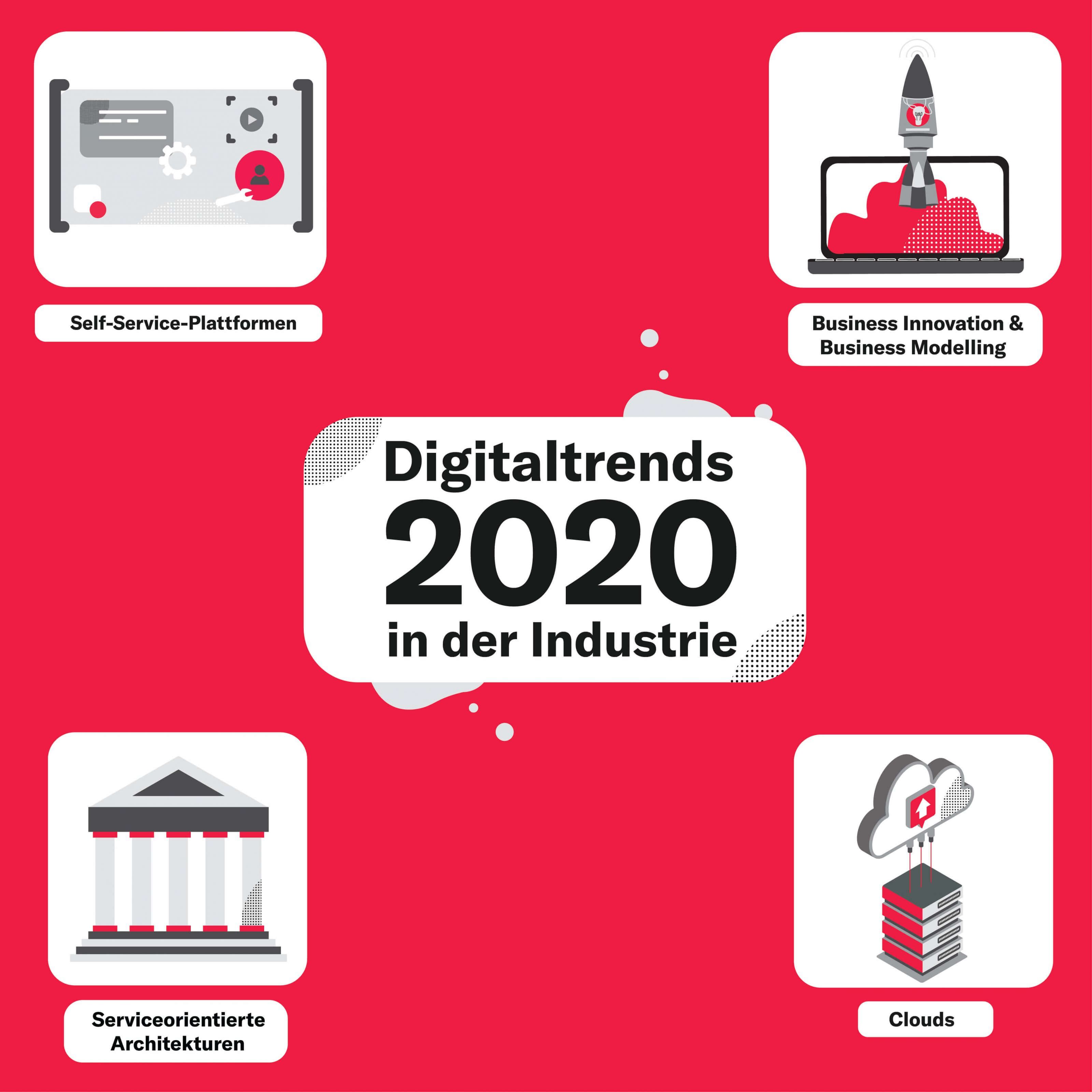Digital trends 2020 for industry
From clouds to self-service platforms: These are trends that industrial companies should not miss

St. Gallen / Frankfurt, 04 February 2020 - Which developments and technologies will be decisive for industrial companies this year? Namics, one of the leading Swiss full-service digital agencies, has identified four core trends. Maximilian Hummel, industry expert and Principal Business Consultant at Namics, knows how the industry should deal with them and what companies need to consider when implementing them.
Trend 1: Self-Service-Plattformen
Customer portals have become indispensable in the B2C sector. B2B companies are now also recognizing the potential and are investing more heavily in self-service platforms. There are two main reasons for this:
- 24/7 availability with simultaneous cost reduction: Web interfaces are not only available to customers around the clock, but also offer savings potential in support and sales.
- Sales generation: With a central digital point of contact, industrial companies bundle customer contact and all functionalities, such as dashboards, order overviews, loyalty programs or personalized offers, in one place. This is used for targeted marketing and to optimize sales in the core business (re-, up- & cross-selling).
"It is important to take an integrated view of the self-service platform and to understand it as a genuine single point of contact," advises Hummel. A well thought-out concept that takes into account all integrated systems and their interfaces is therefore essential. The architecture must also meet all functional requirements such as features, usability, data and interfaces, as well as non-functional requirements such as stability, load and security.
Trend 2: Business Innovation und Business Modelling
New technologies such as IoT connectivity, analytics and higher bandwidth enable new revenue models. Companies must identify these in a targeted manner in order to increase their own competitiveness and open up new markets. A popular trend is "Anything-as-a-service" (XaaS), i.e. developing a service offering from their own products and their benefits. Hummel advises digital business innovation projects to take these three aspects into account:
- Interdisciplinarity: Different levels and departments - from management and IT to UX (user experience) experts - must work closely together to develop a comprehensive solution. Rigid structures and processes are rather counterproductive here.
- Pragmatics: Why reinvent the wheel when you can rely on existing building blocks? However, pragmatic solutions also require a precise, not too broadly defined task and objective.
- Focus on the market launch: For business success it is crucial not to get lost in the conception phase. A rapid go-to-market approach enables them to test the market entry with their offers at an early stage and to incorporate the knowledge gained into the product development process.
Trend 3: Serviceorientierte Architekturen und Microservices
A successful service-oriented architecture follows the modular principle: Complex questions are captured and solved via individual sub-problems. Microservices, i.e. services that each perform a small task, help in this process. Different processes can be combined like modules to form complex software. This makes it possible to extend systems as desired, to change them individually and to integrate them into surrounding systems.
However, setting up a service-oriented architecture takes time. This is where companies should primarily invest in the conception phase. "An interdisciplinary team of different experts is particularly important," says Hummel. "In this way, all important dependencies can be identified right from the start. After all, every visual action usually involves technical interaction and a corresponding infrastructure component. The target architecture should also take into account the relevant sector and industry sector. Prototyping can support this.
Trend 4: Clouds
Today's demanding requirements for online applications can hardly be implemented on your own infrastructure. Cloud offers have proven and established themselves. They are superior to in-house solutions in terms of bandwidth, availability and performance. Even the heavily regulated financial or pharmaceutical industries rely on the technology and thus underline its reliability.
In order to use cloud-based services and benefit from their state-of-the-art functionalities, however, industrial companies need specialists who can support them with extensive cloud expertise from the conception to the development. "A pure migration of old systems to a cloud platform is not very effective and usually works poorly," says Hummel. "Rather, companies must consistently align their concepts with the cloud from the very beginning.




